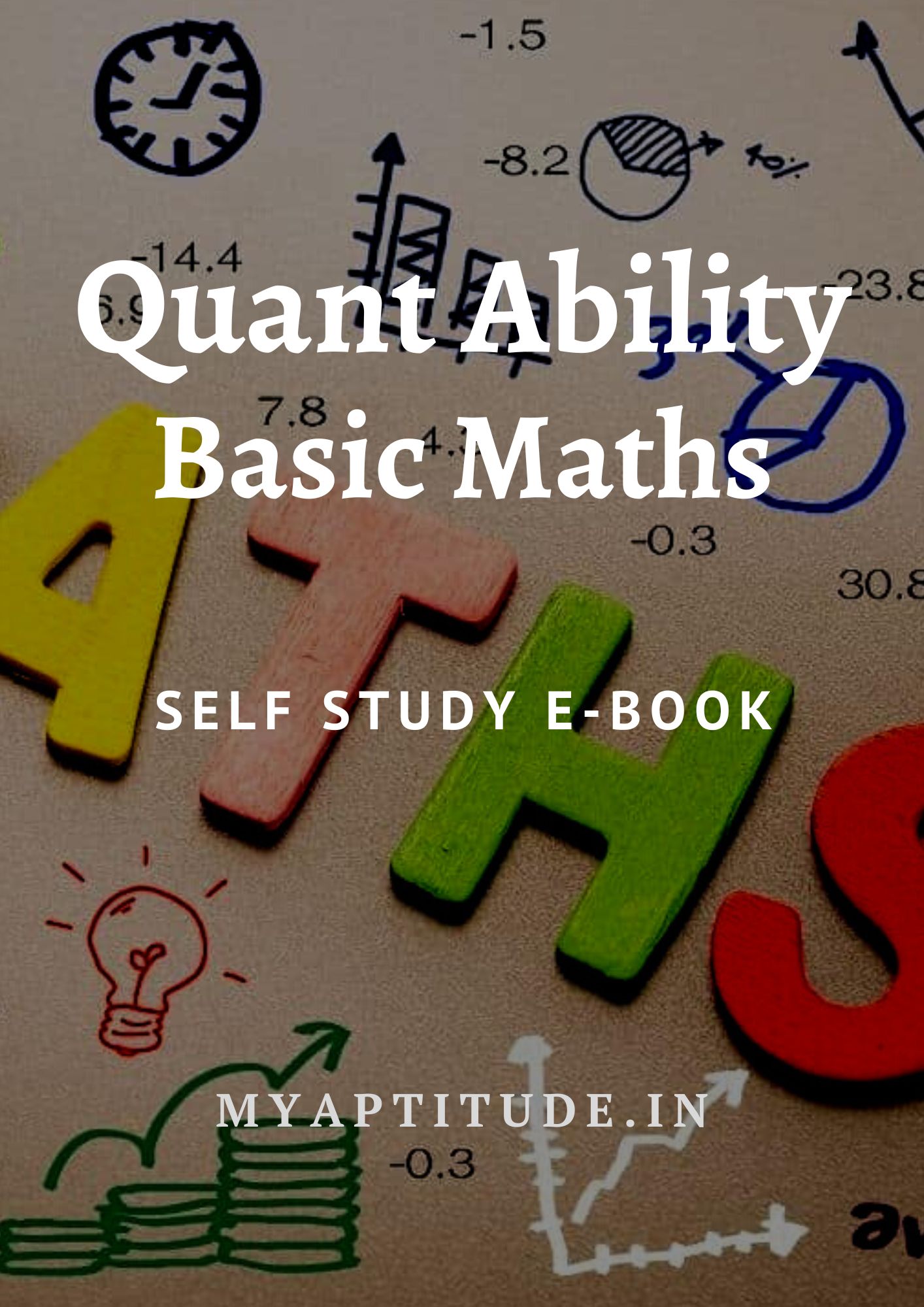Quant Ability Ebook

₹90.00
- Download Free with Premium Membership!
This Ebook covers General Mathematics, also known as Quant Ability.
The Ebook is divided into six sections.
Section A: Numbers
1. Number Systems
- Number Line
- Mathematical Operations
- Order of Operations
- Type of Numbers
- Natural Numbers
- Whole Numbers
- Integers
- Rational Numbers
- Irrational Numbers
- Real Numbers
- Even and Odd Numbers
- Factors and Multiples
- Prime and Composite Numbers
- Factorisation of Numbers
- Number of Factors
- Divisibility
- Divisibility Rules
- Factorial
- Surds and Indices
- Fractions and Decimals
2. Remainders
- Remainder Theorem Transformation
- Remainder Theorem
- Cyclicity of Numbers
- Successive Division
- Prime Numbers
- Fermat's Remainder Theorem
- Euler's Remainder Theorem
3. LCM and HCF
- Lowest Common Multiple
- Highest Common Factor
- LCM & HCF Relation
- Applications: Time & Work
- Applications: Circular Motion
- Applications: Number of Rows
- Applications: Finding Remainder
4. Averages
- Properties of Average
- Meaning of Central Value
- Average Involving Numbers
- Weighted Average
- Average Speed
5. Ratio and Proportion
- Comparison of Ratio
- Proportion
- Variation
6. Mixtures and Alligation
- Rule of Alligation
- Mixing Pure Component
- Mixtures
- Removal and Replacement
7. Percentages
- Percentage Ratio Equivalence
- Basic Rules
- Percentage Changes
- Successive Percentage Change
- Product Stability Ratio
8. Profit and Loss
- Important Formula
- Honest Ways of Profit
- Dishonest Ways of Profit
9. Interests
- Simple Interest
- Compound Interest
10. Speed, Time and Distance
- Conversion Factors
- Average Speed
- Relative Speed
- Problems on Trains
- Boats and Streams
- Circular Tracks
11. Time and Work
- One Day Work
- Time Work Equivalence
- LCM Method of Solving
- Collective Work
- Pipes and Cisterns
Section B: Algebra
12. Algebra and Polynomials
- Introduction to Algebra
- Algebraic Formulae
- HCF and LCM of Polynomials
13. Equations
- Linear Equations in One Variable
- Linear Equations in Two Variables
- Consistency of a System of Linear Equations
- Solving Simultaneous Linear Equations
- Inequality
- Quadratic Equation
- Nature of the Roots
- Quadratic Formula
- Cubic Equations
14. Progressions
- Arithmetic Sequence
- Arithmetic Mean
- Geometric Sequence
- Harmonic Progression
- Relation Between A, G, H
- Sum of Natural Series
Section C: Geometry
15. Geometry
- Point
- Line
- Angles
- Types of Angles
- Pair of Angles
- Parallel and Perpendicular Lines
- Transversal
Polygons
- Types of Polygon
- Angles of Polygon
Triangles
- Types of Triangle
- Right Triangle Altitude Theorem
- Median
- Congruence of Triangles
- Similar Triangles
- Special Triangles
Quadrilateral
- Types of Quadrilateral
- Mid-Point Theorem
Circles
- Parts of a Circle
- Properties of Circles
- Cyclic Quadrilateral
- Tangents to a Circle
Section D: Mensuration
16. Mensuration
- Triangle
- Rectangle
- Square
- Parallelogram
- Rhombus
- Trapezium
- Quadrilateral
- Circle
- Sector of Circle
- Cuboid
- Cube
- Cylinder
- Cone
- Frustum of Cone
- Sphere
- Pyramid
Section E: Trigonometry
17. Introduction to Trigonometry
- Trigonometric Ratios
- Relationships Between T-Ratios
- Complementary Angles
- Standard Trigonometric Identities
- Heights and Distances
Section F: Other Topics
18. Permutation and Combination
- Factorial
- Meaning of P & C
- Fundamental Principles of Counting
- Linear Permutation
- Circular Permutation
- Combination
- Distribution of Things into Groups
- Number of Terms in Polynomial Expansion
- Rank of Word
19. Probability
- Experiment and Events
- Sample Space
- Probability of Event
- Addition Theorem on Probability
- Independent Events
- Conditional Probability
20. Sets
- Operation on Sets
- Important Formulas
- Venn Diagram